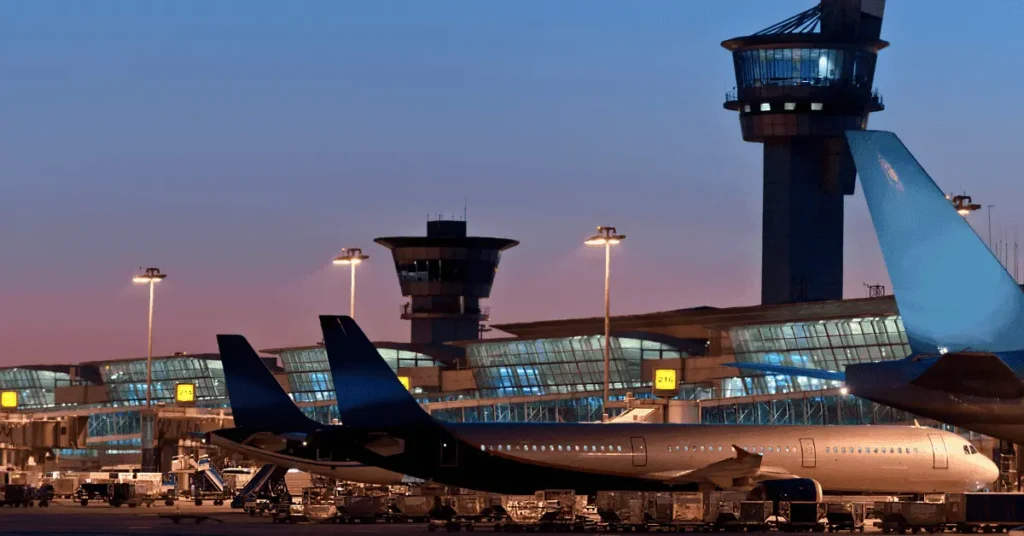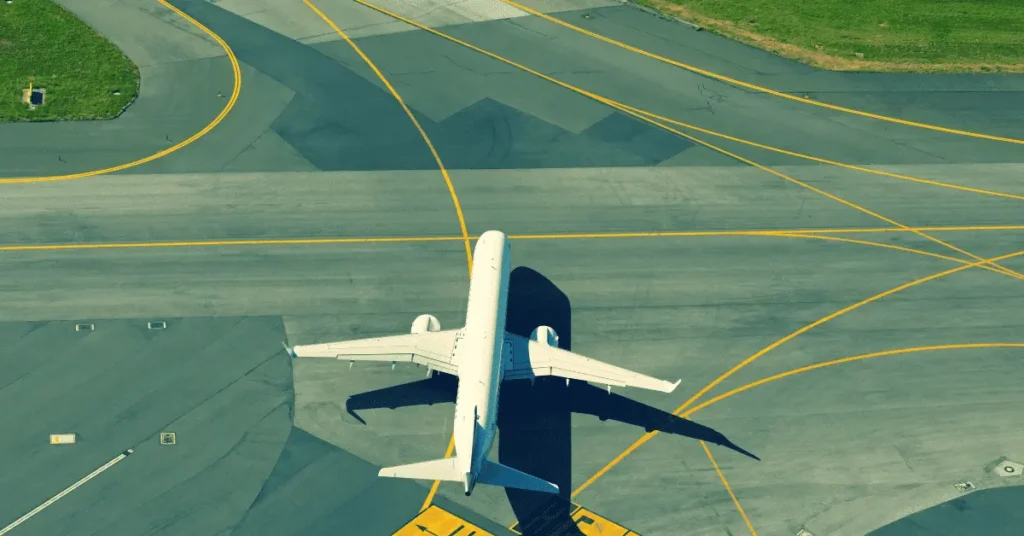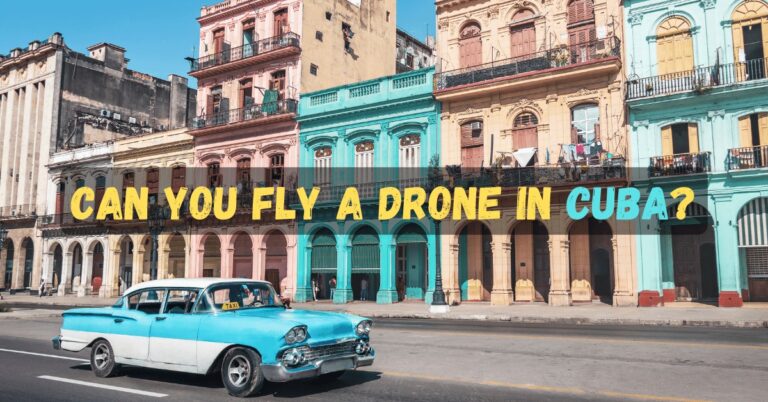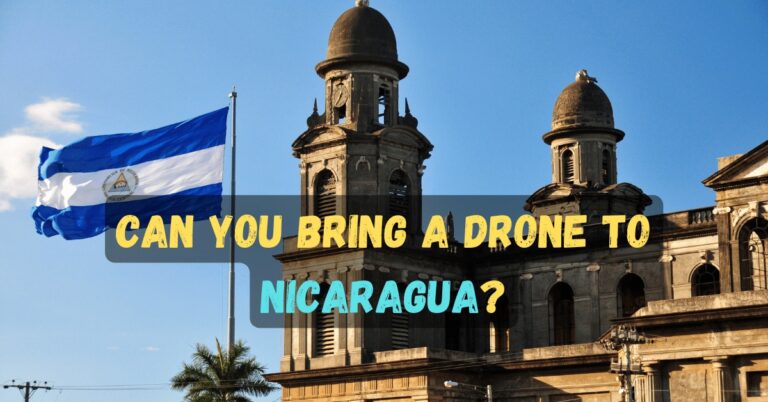Can You Fly a Drone in Class C Airspace?

Drone pilots are people who have total knowledge about flying a drone anywhere. Suppose they don’t know, then they are not professionals.
There are a lot of places where drones get flights. Just like that, there are spaces near airports that are important to know, which are the airspaces.
Can you fly a drone in Class C airspace?
Yes, you can fly a drone in Class C airspace. For flying a drone in Class C airspace, you must have permission from the FAA and the local authorities, like the airport management. If any authority doesn’t allow you to fly the drone in Class C airspace, you should not dare to fly in class C airspace.
In this article, I will not only talk about the permission or denial of the authorities in Class C airspace, but I will also tell you how you can fly your drone in Class C airspace.
So if you want to take images or shoot videos with your drone in Class C airspace, then keep reading this article.
What does it mean by Class C Airspace?
Class C airspace is airspace with so much air traffic controlled by the USA’s federal aviation administration. Class C airspace is the airspace that covers the area from the surface to 4000 feet around the small airports.
In easy words, Class C airspace is specifically used for controlling the air traffic where so many airplanes pass by. The area of the Class C airspace can be changed in some places where it can have 7500 feet altitude.
The basic and the most critical work of the Class C airspace is controlling the air traffic and providing a safe and efficient environment for the pilots.

Pilots who fly planes in these special airspaces are required to get permission from air traffic control, and they must follow the rules and procedures made by the authorities to save the planes or any aircraft from collision.
Lastly, the Class C airspace is a way for the airports to manage the air traffic in the immediate vicinity and ensure the safety and organized flights for all aircraft involved.
Can any drone pilot fly in Class C Airspace?-What are the rules?
Everybody can’t fly a drone in Class C airspace. If you want to fly your drone in Class C airspace, you will need to get permission from the FAA. After the approval, you will need to follow all of the rules made by the federal aviation administration.
The Class C airspace is not some tiny national park or a town. It is an airspace designated around the larger airports. To fly your drone in Class C airspace, you will need to get the permissions needed to follow the rules that the authorities recommend.
Some of the rules are down below:
Get the Permission: The first rule for any drone pilot is to get permission from the LAANC(Low Altitude Authorization and Notification Capability), or the second most crucial authority is FAA(Federal Aviation Administration).
There are online websites where you can send the request to the LAANC, or you can go to the DronZone portal of FAA.

Follow the restrictions of Airspace: After sending the request, you will get the approval, and now you need to obey all of the orders of the FAA. The most important restrictions are altitude restrictions, distance from the airport, and there will be some other restrictions and regulations for the specific airspace.
Important Visual Line of Sight: Whenever you have the time to fly a drone in Class C airspace, it would help to keep it in your visual line of sight. There is so much air traffic, and your drone can collide with an aircraft if you fly it wearing goggles and take it so far from you that it cannot be seen.
Always Seek the Other Aircraft: Watch the other aircraft if you fly your drone in Class C airspace. If you see an aircraft in your way, you must take any necessary evasive action to avoid a collision.

Specific Height: It is always the same rule for everybody that only flies your drone 400 feet above ground level. This rule is also applied in Class C airspace. If you want to fly your drone higher, you will need approval from a specific authority.
Do not fly your Drone Over People: If you think you can shoot videos of a crowd of people while in the Class C space, you are making a huge mistake.
READ MORE: Can you fly a drone in your house?
It would help if you kept an eye on the other aircraft and should not fly your drone over the people. It is also not allowed to fly the drone over properties that are in Class C airspace.
If you are thinking of flying your drone in Class C airspace, keep in mind that the rules get changed, and you will have to check the website of the authorities that control the drone rules in your region or country.

There need to be more rules. There are many, but you must reach out to the authorities and ask them for the latest rules.
What is required to fly a drone in Class C Airspace?
First of all, the most important thing is getting approval from the FAA. If you cant approach FAA, then you can go with LAANC. LAANC is a digital system that will provide you with the authorizations; they have a collab with the FAA and the other authorities that control drones or even air traffic rules.
The second critical requirement to fly a drone in Class C airspace is the promise that you will follow all of the drone rules in Class C airspace. The rules above are the most important ones for you, and some are below.
Rules for your Specific Drone: If you are a commercial drone pilot, then for that, you will have to get the FAA’s part 107 exam and should be passed, your drone should be registered, and you should know about the maps and the restricted areas that are not-fly zones.

Type of Drone: Look, flying a drone used in agriculture doesn’t make sense to be flown at the airport, right? So it would help if you flew a specific drone that can be flown in Class C airspace.
If the airspace requires specific attachments with your drone, then you should have them. In my experience, your drone must have an obstacle avoidance and return-to-home feature.
Different Types of Authorization:
There are some different types of authorization that you may require to fly your drone in Class C airspace. Some of the significant ones are down below:
FAA Part 107 Remote Pilot Certification: This is important for every drone pilot living in the USA. To fly your drone commercially in Class C airspace, you must have the FAA Part 107 Remote Pilot Certificate.
ATC(Air Traffic Control) Clearance: If you want to fly your drone in Class C airspace, you must get ATC permission. For this, you will need to tell the authority the flight plan, specific route, timeframe, and altitude.
FAA Waiver: This is the same thing I discussed above. You can also get authorization from the FAA. In this authorization, you will need to provide a detailed plan and tell everything you will do with your drone at the place. You should also be aware of the risks you can face while flying a drone in Class C airspace.

Military Coordination: In some places, it is also seen that the military controls Class C airspace. So if you want to fly your drone near the airspace controlled by the military, you will need to contact them. Most of the time military doesn’t provide you with any website, and you need to meet a person from the military to get the authorization.
Remember, in the Class C airspace, there will be so much air traffic and flying a drone without authorization can get you in jail or a serious matter. Do not fly your drone without authorization; follow the rules if you get the authorization.
How to get approved to fly a drone in Class C Airspace?
Below are the steps you need to follow precisely, and you will get approved to fly a drone in Class C airspace.
Before flying a drone in Class C airspace, you must have the Remote Pilot Certificate from the FAA. If you want to get it, you can go to the FAA’s official website and send them a request ticket.
Before flying a drone in any space, you must check the FAA’s facility maps to determine whether the area is in class c.

If the area is actually in the Class C airspace, then all you need to do is open the FAADroneZone website, which is an official website and fill out the form. In this form, you will have to add your drone pilot certification number, registration number, and all the other flight details.
If you want to fly your drone at a specific time, it will help if you send the request 90 days before. It takes so much time for the authority to understand and send you a reply because it is not only you who is sending the request.
READ MORE: Can you fly a drone in Florida?
On any day of the 90 days, you will receive approval from the FAA, or it can also be denied. My tip here is to send the request carefully and be as sweet as possible with the request.

So if you get approved, then in the letter, there will be rules and regulations and how you will communicate with the air traffic control during the flight.
It is not like getting approval from the other local authorities from any town, here you are flying your drone near the planes, and it is a solemn responsibility and requires knowledge and preparation. So be responsible as much as possible, prioritize safety, and follow all regulations.
What class airspace can drones fly in without authorization?
Drones can fly in Class G airspace without any authorization from any authority. Class G is uncontrolled airspace, which begins at the ground level of 1200 feet. Some areas will be up to 700 feet AGL, and these areas have mountains.
In Class G airspace, all the pilots of the drones do not need to give response to the radio of the airspace. There need to be traffic control services in these areas. But it doesn’t mean that there are no drone laws. There are other drone laws that the local authorities might settle down.

Those rules can be:
- Do not fly above 400 feet.
- Fly your drone in your visual line of sight.
- Fly only during the daytime or before sunrise or after sunset.
- You cannot fly your drone over a highway with moving vehicles and people.
- If you see any aircraft, you must yield the right of way.
- If other aircraft are flying, do not fly your drone there because it can collide with them.
In the current time, in some places, you will not be allowed to fly your drone in the Class G airspace. There could be many reasons, like specific events, wildfires, security reasons, or airspace protection for special occasions.
As a good pilot, I recommend you do not fly your drone without checking the FAA’s UAS Facility Maps or mobile apps like B4UFLY.
How many class airspaces are?
There are six classes of airspace in the USA, and they can differ in other countries. You must visit their officials if you want to fly your drone in other countries. All six classes are explained below.
Class A: The first Class Airspace is “A”. It is the highest level of controlled airspace, and if we talk about its mean sea level, it begins with 18,000 feet MSL and can go to 60,000 feet MSL.

It is only used for commercial airline traffic, like for planes, and any other aircraft is not allowed to be flown at this much altitude.
Class B: is the second most important and restrictive type of controlled airspace. Its MSL(mean sea level) begins from the surface to 10,000 feet MSL and requires IFR clearance for all aircraft. All pilots must first get clearance in this airspace and comply with speed and altitude restrictions.
Class C: There is so much heavy traffic around airports in this classification. If we talk about its MSL, it begins with 4,000 from the ground, and to fly the aircraft in it, the pilots needed to require two-way radio communication with the air traffic control.
You might have seen the pilots reporting back with some English words and telling the name of their aircraft in movies. Yes, that is the response they give to the airspace traffic control and get the clearance.
Class D: In this type, there is less air traffic, and it mostly surrounds the smaller airports, and it mainly covers the surface up to 2,500 feet MSL and also requires two-way radio communication with air traffic control for every aircraft.

Class E: This is uncontrolled airspace but has some rules that tell you it is not entirely uncontrolled. If we talk about its height level, it begins from the surface up to 18,000 feet MSL in certain areas.
Class G: It is entirely uncontrolled airspace, and you do not need to communicate with the air traffic control unless you use IFR. Class G is the best option for drone users to fly a drone in it.
How to identify airspace for drone operations?
There are specific ways to identify the airspace for drone operation. If you are a pilot who couldn’t find out the airspace in which he should fly his drone, then read the ways below:
Check the Airspace Map: If you want to check the airspace around you or your specific area, you will need to use an app like AirMap, Skyward or the B4FlyApp. All the apps will give you clearance where you can and cannot fly your drone.
It will also tell you a visual representation of the airspace, is the area controlled airspace, restricted airspace or a no-fly zone?
Identify Controlled Airspace: This is the airspace where you have no control on your airspace this kind of airspace is controlled through the specific “Air Traffic Control“.

The ATC has divided this airspace into classifications and given them names like Class A, B, C, D, and E. To identify these areas, you can again use the same app or visit the area and meet the person.
Check Restrictions: If you have found the type of your airspace and the classification as well, then next, you need to find out the restrictions in that area; please follow all of the drone rules and do not cross the limit.
Remember flying drones in these areas is no longer fun, and it is always better to be safe than sorry. After following all the steps above, you can use your mind and contact the local authorities, meet a person of authority or contact a professional drone user in your area to give you advice.
What are the consequences of violating airspace restrictions?
As you know, if you violate any drone rule or motorized vehicle rule, you get fined or imprisoned for some time. Just like that, if you don’t follow the rules and violate the airspace restrictions, then what will happen to you is written below.
Legal Consequences:
If an individual violates the airspace’s restrictions, legal actions will be taken against that person. If the person flies the drone in restricted airspace without permission or with permission recklessly, then the government will impose fines on him.

If the person makes the same mistake again or severely damages any property, then the person will be behind bars for a longer time.
Threat to Public Safety:
If you don’t get permission from the ATC and fly your drone there, it’s possible; your drone could become a threat to public safety. There is a reason behind it: if you fly your drone without care, your drone could collide with other aircraft, and you can disrupt the whole air traffic and cause severe damage.
It is because your drone will be confiscated, and you will no longer be a registered drone pilot and won’t be able to fly your drone again.
National Security:
Suppose you fly a drone in a restricted area with military exercises, high-profile events, or other sensitive installations. In that case, your drone can become a threat to national security. The military will shoot your drone down, and you will face many other consequences.
Damage to Reputation:
If you recklessly fly your drone in any airspace, no matter if you have the permits and all the stuff you need to fly a drone there, you will lose your reputation.
Drone pilots are the persons who can be called “Pilots”. So if you fly your drone in a not suitable manner, then it is evident that you will no longer be a gentleman for the authorities. It can ruin your drone pilot career and negatively impact your professional and personal life.

Insurance Issues:
If you make a mistake that is not a mistake, then the insurance companies can also refuse to pay the damage penalties that your drone has caused. If you make an accident with your drone in the airspace area, there will be no insurance for your drone and you.
It will also lead to significant financial consequences for you.
Important FAQs
Can you fly a drone in Class G airspace?
Can you fly a drone in Class D airspace UK?
Can I fly a drone in Class e airspace?

Final Thoughts
If you are a commercial drone pilot, then the airspaces areas can be a tough job for you to take photos or shoot videos of them. There are six airspaces in the USA, and some of them are highly restricted, and some of them are uncontrolled. So, can you fly a drone in Class C airspace? It is a drone airspace classification.
Yes, you can fly a drone in Class C airspace. But to fly your drone without problems and harmful consequences, you must read and understand some drone laws made explicitly for Class C airspace. It would help if you got special authorizations to fly your drone in Class C airspace.
If you have any further questions disturbing your mind, you can ask them in the comment box, and I and you and the other community will solve them together. If you have questions unrelated to the question: Can you fly a drone in Class C airspace? then again, you can write them in the comments.
Have you ever flown your drone near airports?
Can You Fly a Drone in Atlanta? || Drone Laws in Atlanta
Curious about drone flying in Atlanta? 🚁🌆 Learn the dos and don’ts of drone laws in the ATL. Fly safe, stay informed! Check out this article now. ✈️👀 #DroneLaws #Atlanta #FlySmart







